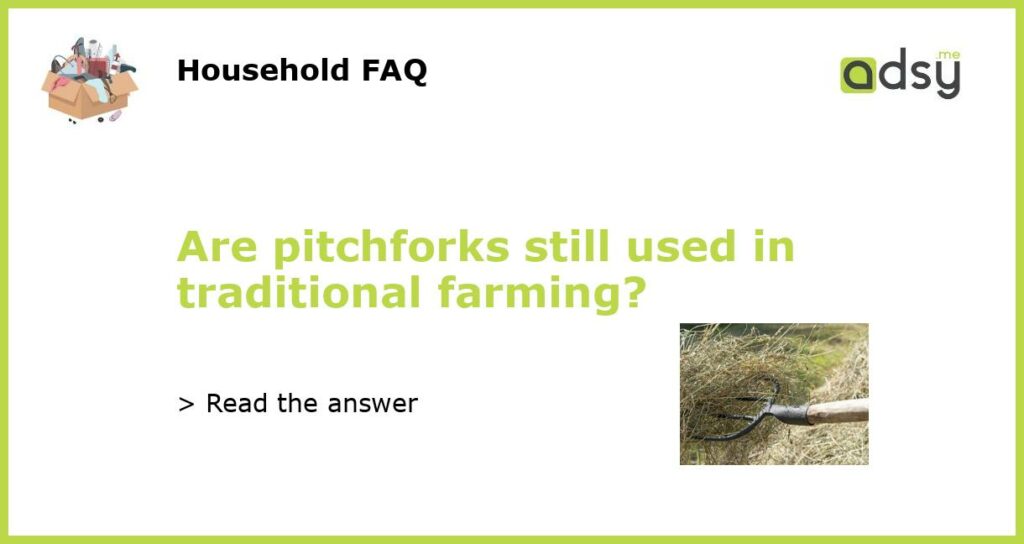Yes, pitchforks are still used in traditional farming
When you think of traditional farming, images of hardworking men and women toiling away in the fields may come to mind. And one of the iconic tools that you might associate with this image is the pitchfork. But in today’s modern agricultural landscape, where high-tech machinery dominates the field, are pitchforks still commonly used in traditional farming?
The role of pitchforks in traditional farming
While it is true that technology has revolutionized farming practices, making them more efficient and productive, there are still situations where pitchforks play a crucial role. Pitchforks are traditional farming tools that have been used for centuries to perform a variety of tasks. They are typically made of wood or metal and consist of a long handle with two or three sturdy tines.
One of the primary uses of pitchforks in traditional farming is for handling hay or straw. Farmers use pitchforks to toss and turn these materials, making it easier for them to dry and preventing mold or rot. Additionally, pitchforks are handy tools for loading or unloading hay bales onto wagons or into barns. Their sharp tines allow farmers to pierce through the bales, making it easier to lift and transport them.
The advantages of using pitchforks in traditional farming
Despite the advent of modern machinery, there are several advantages to using pitchforks in traditional farming. One benefit is their cost-effectiveness. Pitchforks are relatively inexpensive compared to large-scale farming equipment, making them more accessible to small-scale or subsistence farmers who may not have the resources to invest in expensive machinery.
Another advantage of pitchforks is their versatility. Unlike specialized farming equipment, pitchforks can perform a range of tasks beyond handling hay or straw. They can be used for turning compost, spreading mulch, clearing debris, and even as a tool for working with livestock. This versatility makes pitchforks an indispensable tool for traditional farmers who often have to perform multiple tasks on their farms.
The evolution of pitchforks in modern farming
While pitchforks continue to be used in traditional farming, especially on smaller farms or in regions with limited access to machinery, their usage has evolved in modern farming practices. In large-scale commercial agriculture, machine-driven processes have largely replaced manual labor, including the use of pitchforks.
However, there are still instances where modern adaptations of the pitchfork are used. One example is the use of mechanized pitchforks or hay forks, which are attachments for tractors or skid steer loaders. These forks have the same basic design as traditional pitchforks but are powered by machinery, making them more efficient for lifting and stacking large quantities of hay or straw.
Conclusion
So, while the use of pitchforks in traditional farming has diminished in large-scale modern agriculture, they still play a vital role in smaller farms and in regions where machinery is not readily available. The versatility and cost-effectiveness of pitchforks make them a valuable tool in the hands of traditional farmers, allowing them to handle various tasks with relative ease. And with the advent of mechanized pitchforks, even large-scale commercial farms can benefit from the practicality and efficiency that pitchforks provide.






